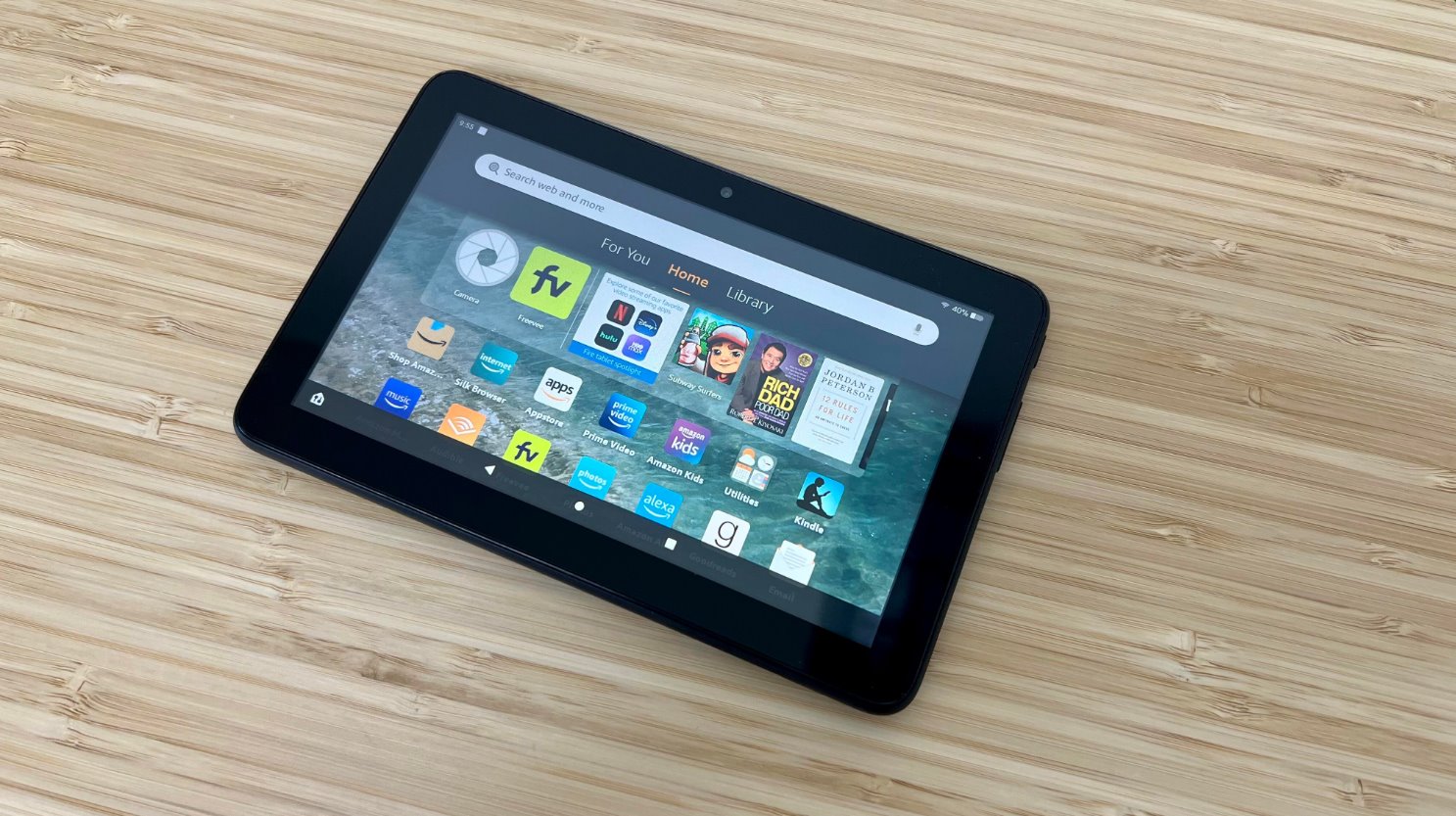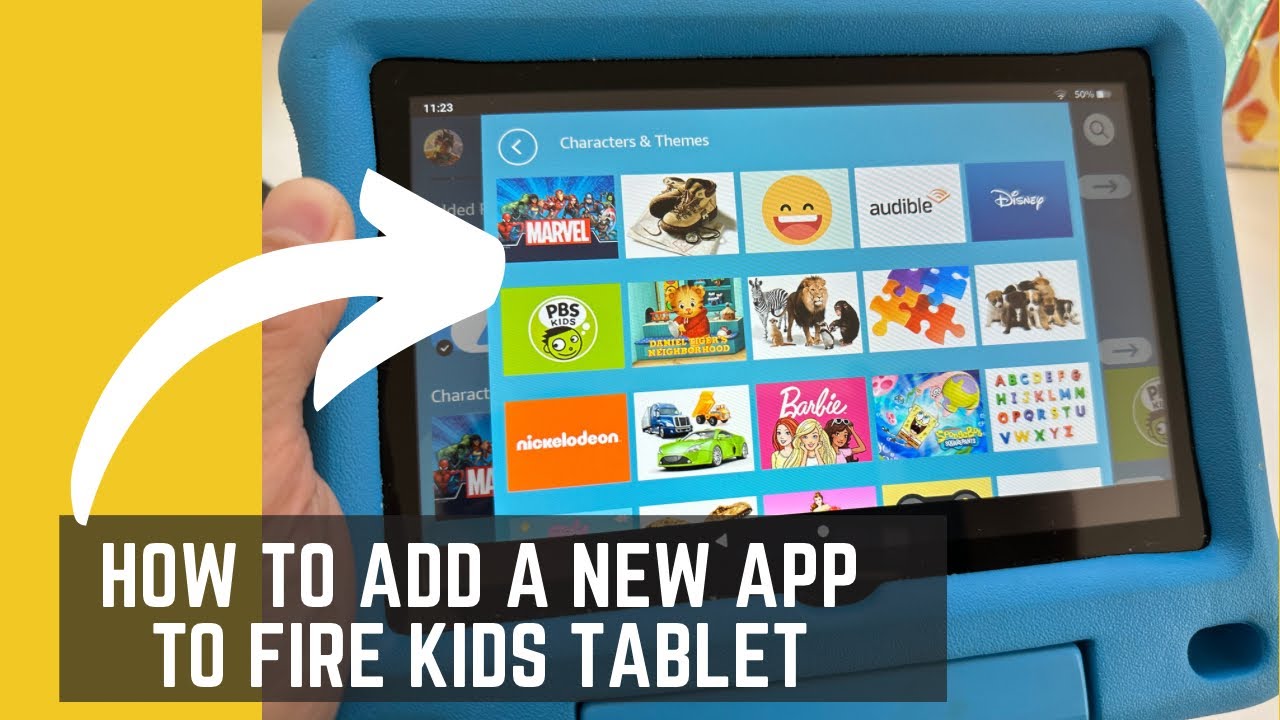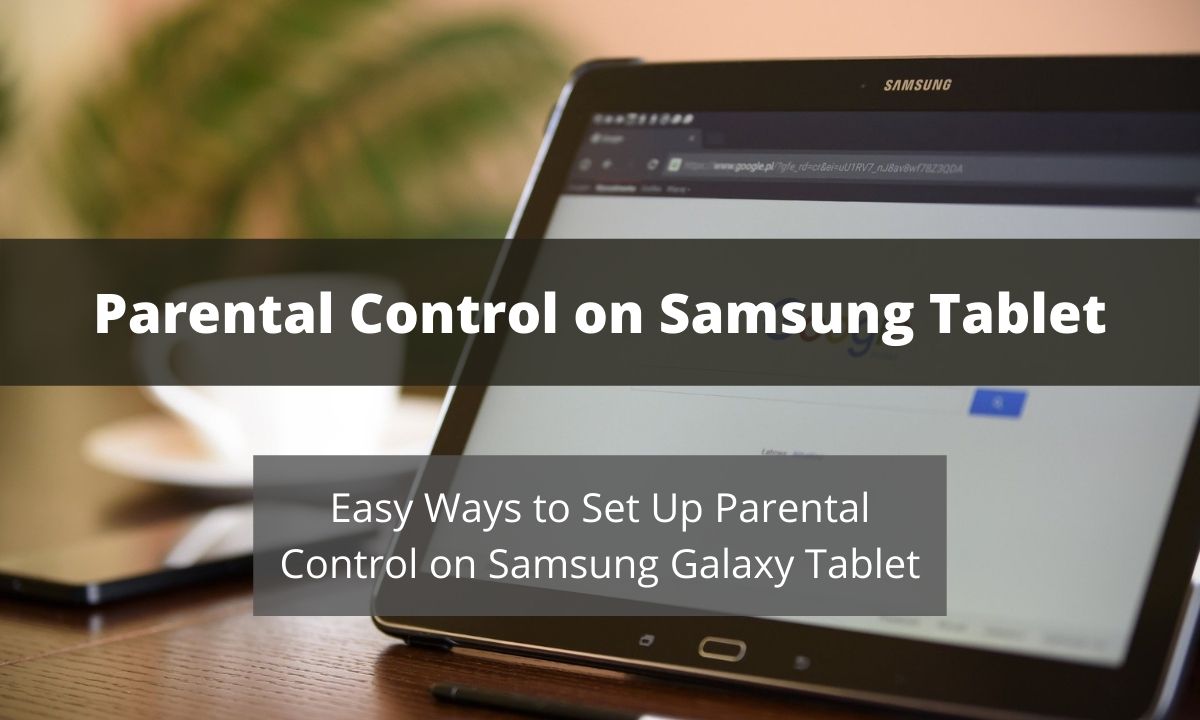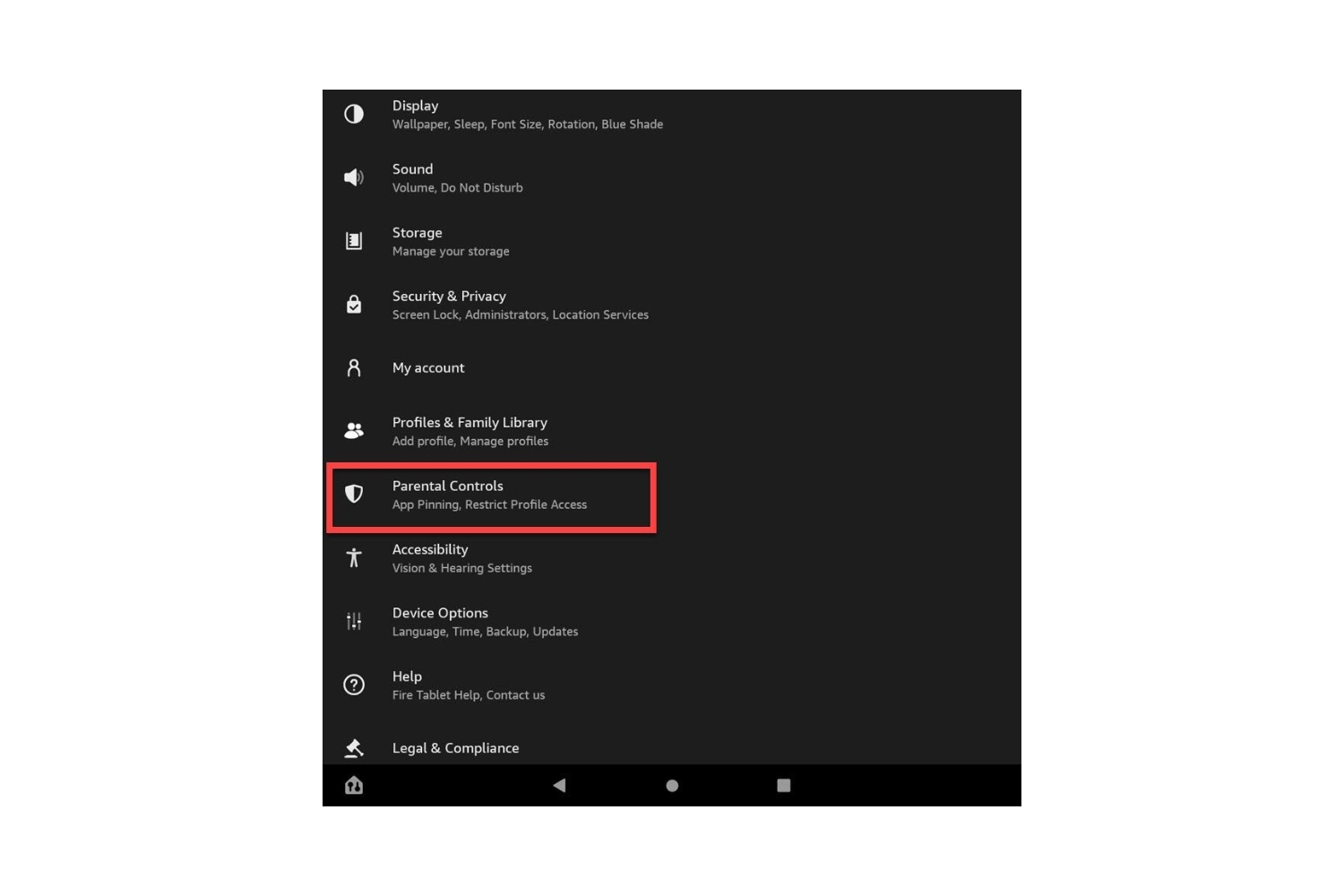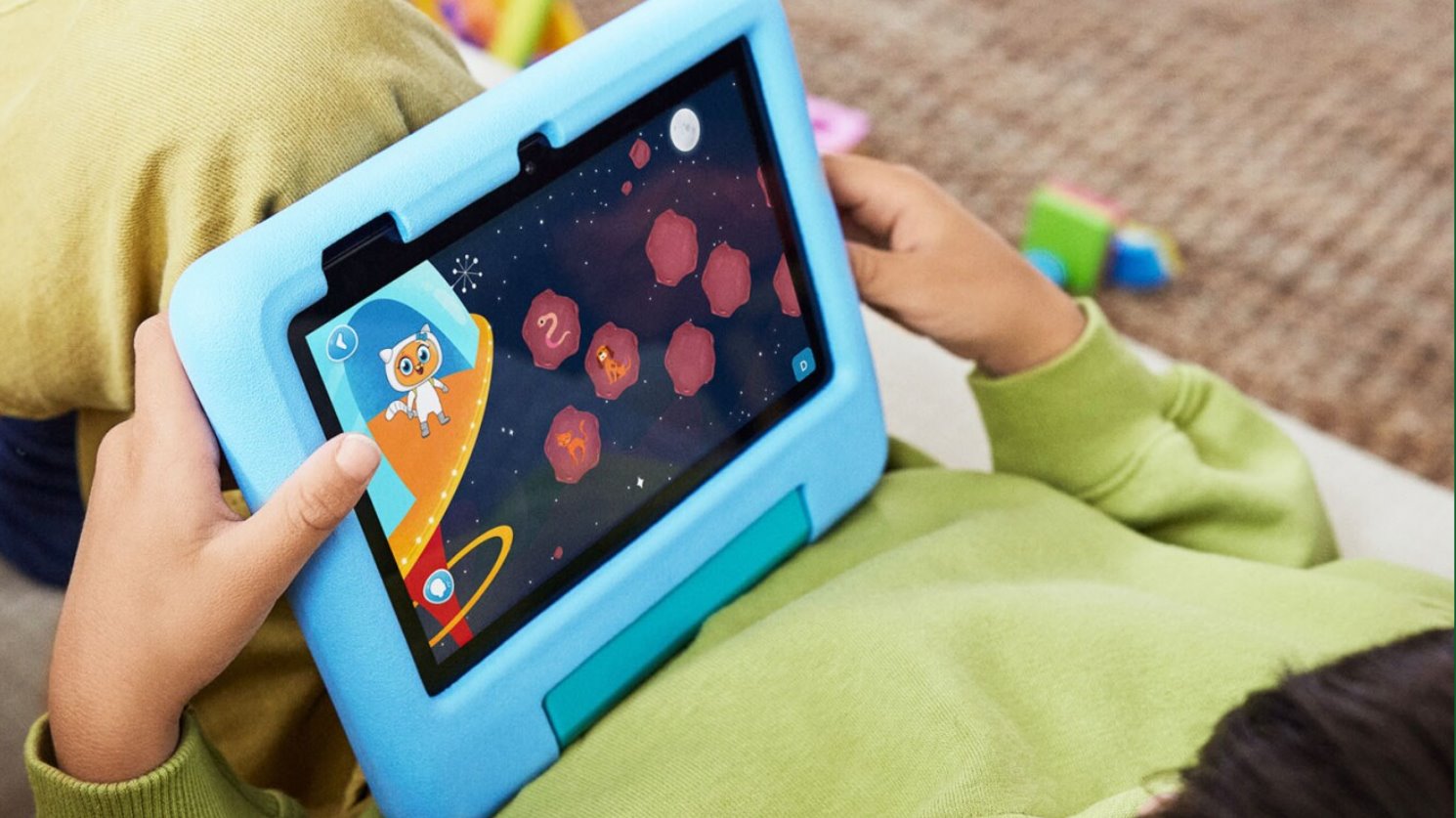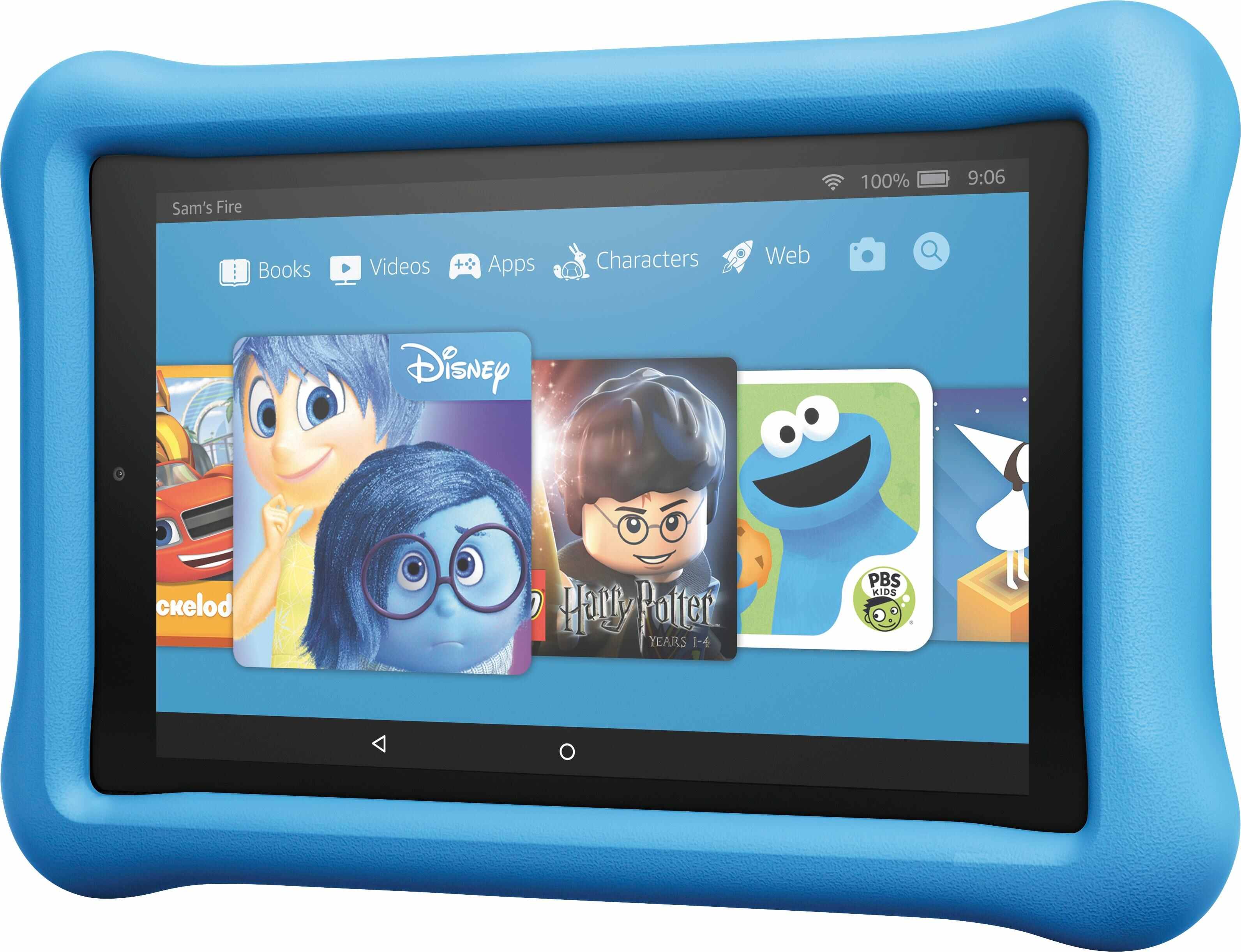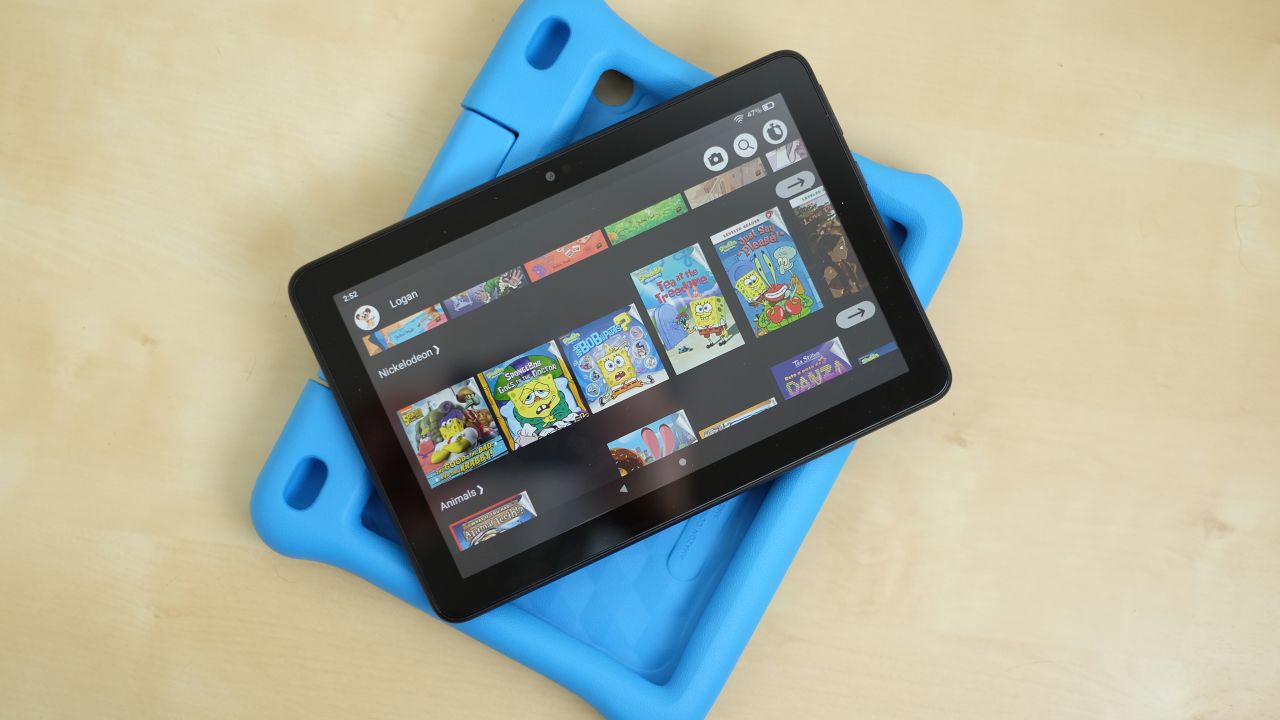Introduction
In today’s digital age, technology has become an integral part of our lives, and it’s no surprise that children are growing up in a world filled with smartphones, tablets, and other devices. Parents often wonder at what age they should introduce their child to a tablet. The answer may vary depending on a variety of factors, including the child’s developmental stage, their ability to handle technology responsibly, and the specific educational benefits they can gain from using a tablet.
Tablets can offer numerous benefits for children, including enhancing their learning experience, developing crucial skills, and providing entertainment. However, it’s essential for parents to consider the potential drawbacks and follow age-appropriate guidelines when deciding to introduce their child to a tablet.
In this article, we will explore the various factors to consider when determining the appropriate age for a child to get a tablet. We will discuss the benefits of using tablets for children, the age-appropriate use of tablets for different stages of childhood, and provide tips for parents on introducing tablets to their children.
It’s important to note that every child is unique, and parental discretion should prevail when making decisions about screen time and technology use. The following information serves as a general guide to help parents make informed choices regarding their child’s use of tablets.
Benefits of using tablets for children
When used appropriately and in moderation, tablets can provide several benefits for children’s development and learning. Here are some of the key advantages:
- Interactive learning: Tablets allow children to engage with educational apps and games, promoting interactive and hands-on learning experiences. Through these interactive activities, children can enhance their cognitive and problem-solving skills.
- Access to educational resources: Tablets offer a wealth of educational content, including e-books, educational videos, and online libraries. Children can explore various subjects, from math and science to history and languages, expanding their knowledge in a fun and engaging way.
- Creativity and imagination: Many tablet apps encourage creativity and imaginative play, allowing children to draw, create digital artwork, and compose music. These activities can foster self-expression and stimulate their imagination.
- Enhanced language skills: Through interactive reading apps, children can improve their reading and language skills. Features such as word highlighting and audio narration can assist early readers in developing their vocabulary and comprehension abilities.
- Fine motor skills development: Utilizing touch screens can help children refine their fine motor skills as they navigate the tablet and interact with different apps. Activities such as dragging, tapping, and tracing can improve hand-eye coordination and finger dexterity.
- Accessible learning tools: Tablets can accommodate children with learning difficulties or special needs. With customizable settings and accessibility options, children can personalize their learning experience based on their individual needs and preferences.
It’s important for parents to ensure that the content and apps their child interacts with are age-appropriate and aligned with their educational goals. Additionally, parental supervision and involvement in the tablet experience can further enhance the benefits and mitigate any potential risks associated with excessive screen time.
Factors to consider when deciding the age
When determining the appropriate age for a child to get a tablet, several factors should be taken into consideration. Each child is unique, and their readiness to handle technology may vary. Here are some key factors parents should consider when making this decision:
- Physical development: Young children may not have the motor skills necessary to navigate a tablet effectively. Consider whether your child can hold and manipulate a tablet comfortably without difficulty.
- Emotional maturity: It’s important to gauge your child’s emotional readiness. Are they able to follow instructions, understand boundaries, and demonstrate responsible behavior? Children should be able to use a tablet responsibly, following rules and guidelines set by parents.
- Ability to focus: Tablets can be engaging, and children need to have a certain level of attention span to benefit from educational apps. Consider whether your child is capable of focusing on tasks and staying engaged for periods of time.
- Educational goals: Determine your educational goals for introducing a tablet. Consider whether your child can benefit from educational apps and whether there are specific skills or subjects you want them to explore using the tablet.
- Screen time management: Evaluate your willingness and ability to set limits on screen time. It is essential to establish healthy screen habits and strike a balance between screen time and other activities such as outdoor play, social interaction, and reading.
- Parental supervision: Consider whether you can provide adequate supervision and guidance when your child is using the tablet. Parental involvement and monitoring can ensure that the tablet is being used appropriately and safely.
It’s important to remember that there is no universal “right” age for every child to get a tablet. These factors are meant to serve as guidelines to help parents make an informed decision based on their child’s individual needs, abilities, and readiness. Parental judgement and discretion should prevail in determining when a child is ready for their first tablet.
Age appropriate use of tablets for infants
When it comes to infants, it’s important to approach the use of tablets with caution. Screen time for infants should be limited, and tablets should be used in a minimal and controlled manner. Here are some guidelines for the age-appropriate use of tablets for infants:
- Minimal screen time: The American Academy of Pediatrics recommends no screen time for infants under 18 months. However, short video calls with family members can provide social interaction for babies and are generally considered safe.
- High-quality content: Choose high-quality educational apps specifically designed for infants. Look for apps that offer simple visuals, soothing sounds, and interactive activities that stimulate their senses.
- Parent-child interaction: When using a tablet with an infant, make it a shared experience. Sit with your baby and engage with them while using the tablet. Talk about what they see and encourage them to explore and interact with the content.
- Limit distractions: Avoid excessive use of background music or sound effects that can overstimulate infants. Keep the environment calm and quiet to enable them to focus on the content and prevent sensory overload.
- Supervision: Always maintain close supervision when your infant is using a tablet. Ensure they do not put the device in their mouth or engage in any unsafe behavior. Tablets should be used under direct parental guidance.
It’s important to note that incorporating hands-on activities, such as playing with toys, reading books, and engaging in physical interactions, is crucial for an infant’s overall development. Tablets should be used as a supplemental tool rather than a primary source of entertainment or learning during the early stages of a child’s development.
Age appropriate use of tablets for toddlers
As toddlers continue to grow and develop, the use of tablets can be introduced in a more structured and purposeful manner. However, it’s crucial to implement age-appropriate guidelines to ensure a healthy and beneficial tablet experience. Here are some considerations for the age-appropriate use of tablets for toddlers:
- Limited screen time: The American Academy of Pediatrics recommends limiting screen time to 1 hour per day for children between 2 and 5 years old. This includes all types of screens, including tablets. Balance screen time with other activities and ensure toddlers have ample time for physical play, social interaction, and creative exploration.
- Age-specific content: Select educational apps and games that are designed specifically for toddlers. Look for apps that focus on early learning concepts, such as colors, shapes, numbers, letters, and basic problem-solving skills. Choose apps that engage their curiosity and promote interactive and hands-on learning experiences.
- Parental involvement: Engage with your toddler during tablet time. Sit with them, explore the apps together, and talk about what they are seeing and doing. Use this as an opportunity to bond with your child and stimulate their language and cognitive development through conversation and interaction.
- Physical activity integration: Encourage toddlers to engage in physical activities related to the content on the tablet. For example, if they are learning about animals, have them imitate the animal movements or create a simple scavenger hunt around the house. This helps reinforce learning and encourages physical movement.
- Set clear boundaries: Establish rules and limits around tablet use. Clearly define when and how long they can use the tablet. Use timers or visual cues to help toddlers understand the duration of their screen time. Teach them to respect these boundaries and encourage them to engage in other activities when their time is up.
- Monitor app content: Regularly review and monitor the content your toddler is accessing on the tablet. Check for age-appropriateness, educational value, and ensure there are no ads or in-app purchases that can lead to accidental purchases or exposure to inappropriate content.
Remember, the tablet should never replace face-to-face interaction, hands-on learning experiences, or active playtime. It should be used as a supplemental tool that promotes learning, creativity, and interaction in a balanced and controlled manner.
Age appropriate use of tablets for preschoolers
Preschoolers are at an age where they can engage with tablets in a more independent and purposeful manner. However, it’s essential to establish age-appropriate guidelines to ensure that tablet use remains educational and balanced. Here are some considerations for the age-appropriate use of tablets for preschoolers:
- Structured screen time: Set a specific time limit for tablet use, keeping in mind the American Academy of Pediatrics’ recommendation of no more than 1 hour per day for children in this age group. Encourage preschoolers to engage in a variety of activities throughout the day, including physical play, outdoor exploration, and social interaction.
- Educational apps and content: Focus on apps and content that promote learning and skill development. Look for age-appropriate apps that cover a range of subjects and help reinforce early literacy skills, numeracy, problem-solving, and creativity. Seek out apps that provide interactive experiences, such as puzzles, storytelling, and educational games.
- Encourage creativity: Use tablets as a tool to foster creativity and self-expression. Look for apps that allow preschoolers to engage in artistic activities, such as drawing, coloring, and creating digital artwork. Encourage them to narrate their creations and tell stories, promoting language development and imaginative thinking.
- Promote critical thinking: Seek out apps that encourage critical thinking, logical reasoning, and problem-solving skills. Look for puzzles, matching games, and activities that require decision-making and analytical thinking. These apps can help stimulate cognitive development in a fun and engaging way.
- Parental guidance: While preschoolers may have more independence in using tablets, it’s still essential for parents to provide guidance and supervision. Stay involved in their tablet activities, ask questions about what they are doing or learning, and provide support when needed. Engaging in discussions about the content can enhance their comprehension and learning experience.
- Healthy screen habits: Teach preschoolers about responsible screen use and reinforce good habits. Discuss the importance of taking breaks, maintaining good posture, and practicing safe tablet behaviors, such as keeping the tablet away from liquids and not sharing personal information online.
By establishing appropriate guidelines and choosing educational apps and content, tablets can be a useful tool to enhance preschoolers’ learning experience and foster their creativity and critical thinking skills. Remember to strike a balance between tablet use and other activities that promote physical, social, and emotional development.
Age appropriate use of tablets for elementary school-age children
As children enter elementary school, their capability to use tablets for educational purposes expands. It’s crucial to establish age-appropriate guidelines to ensure that tablet use remains productive, balanced, and safe. Here are some considerations for the age-appropriate use of tablets for elementary school-age children:
- Extended screen time: Utilize tablets as a tool for educational activities while keeping screen time within healthy limits. The American Academy of Pediatrics recommends no more than 2 hours of recreational screen time per day for children in this age group, including television and other devices.
- Focus on educational content: Encourage the use of educational apps, interactive e-books, and online resources that align with the curriculum and support your child’s learning goals. Look for apps that cover a wide range of subjects, including math, science, language arts, and social studies.
- Promote digital literacy: Teach children about responsible digital behavior, internet safety, and appropriate online interactions. Discuss the importance of avoiding cyberbullying, being cautious with personal information, and practicing good digital citizenship in their online activities.
- Research and project-based learning: Utilize tablets as a tool for conducting research on various topics. Teach children how to find reliable sources, evaluate information, and organize their findings. Encourage them to use tablets for collaborative projects, presentations, and creative assignments.
- Develop critical thinking skills: Encourage children to explore educational games, puzzles, and problem-solving apps that challenge their critical thinking and reasoning abilities. Look for apps that encourage analysis, deduction, and decision-making.
- Parental monitoring: While elementary school-age children may have more independence in using tablets, it is still important for parents to monitor their activities. Establish guidelines for internet browsing, app downloads, and online interactions, and regularly check their usage and content accessed to ensure appropriateness.
- Screen balance: Emphasize the importance of a balanced lifestyle by setting aside time for physical activity, outdoor play, hobbies, and social interactions. Encourage children to engage in a variety of activities to maintain a healthy screen-life balance.
By incorporating educational content and fostering responsible digital habits, tablets can support elementary school-age children in their learning journey, expand their knowledge, and enhance their digital literacy skills. It’s important to remain actively involved in their tablet use, guiding and monitoring their activities to ensure a safe and enriching experience.
Tips for introducing tablets to children of different ages
Introducing tablets to children of different ages requires careful consideration to ensure a positive and valuable experience. Here are some tips to help parents navigate the process of introducing tablets to children of various age groups:
- Start with parental involvement: For infants and toddlers, use tablets as a shared experience with close parental guidance. Sit and explore the apps together, discussing what you see and encouraging their interaction with the content.
- Gradually increase independence: As children grow older, gradually allow them more independence in using tablets. Begin by supervising their activities, setting limits, and gradually granting them more responsibility as they demonstrate good digital citizenship and responsible usage.
- Choose age-appropriate content: Select apps, games, and content that align with your child’s age and developmental stage. Look for educational apps designed specifically for their age group, focusing on their interests and learning goals.
- Encourage creativity and exploration: Use tablets as a tool for creativity and exploration. Encourage children to create digital artwork, tell stories, and engage in imaginative play. Choose apps that promote creativity and self-expression.
- Set limits and be consistent: Establish clear rules and time limits for tablet use. Communicate these rules to your child and be consistent in enforcing them. Use timers or visual cues to help them understand and manage their screen time.
- Monitor content and online activities: Regularly check the apps, games, and websites your child is accessing on the tablet. Ensure the content is appropriate, safe, and aligned with their educational goals. Teach them about responsible online behavior and guide their internet usage.
- Encourage a balanced lifestyle: Emphasize the importance of a balanced lifestyle by promoting physical activity, social interactions, hobbies, and other offline activities. Encourage your child to engage in a variety of activities to maintain a healthy balance between screen time and other interests.
- Model responsible technology use: Be a role model for your child by using technology responsibly yourself. Demonstrate good digital habits, such as maintaining screen-life balance, practicing privacy and security measures, and setting aside dedicated tech-free times for family activities.
- Stay engaged and involved: Continue to engage with your child’s tablet use. Ask questions about what they are learning or playing, discuss their experiences, and provide guidance and support when needed. Stay involved in their digital world to ensure a safe and enriching experience.
By following these tips, parents can introduce tablets to their children in a responsible and beneficial way. Remember to adapt the guidelines to suit your child’s individual needs and monitor their tablet use regularly to ensure a positive and productive digital experience.
Setting limits and parental controls
When introducing tablets to children, setting limits and utilizing parental controls are crucial for ensuring a safe and balanced digital experience. Here are some strategies for effectively setting limits and implementing parental controls:
- Establish clear guidelines: Set clear rules and expectations for tablet use. Communicate these guidelines to your child and ensure they understand the reasons behind them. Discuss aspects such as time limits, appropriate content, and responsible online behavior.
- Use timers or schedules: Implement timers or schedules to help children manage their screen time. Set specific periods for tablet use and establish tech-free times for family activities, homework, or other important activities. Encourage children to self-regulate their screen time within these limits.
- Utilize parental control software: Install parental control software on the tablet to monitor and manage your child’s online activities. These tools can restrict access to certain apps or websites, set time limits, and provide insight into their digital behavior. Choose reputable and age-appropriate software that fits your family’s needs.
- Control app and content downloads: Enable app and content restrictions on the tablet to prevent your child from downloading inappropriate or age-inappropriate apps or content. Utilize filters and ratings systems to ensure that the apps your child uses are suitable for their age and align with your educational goals.
- Supervise internet browsing: Use web filters and safe search settings to protect your child from accessing inappropriate content. Regularly review their browsing history and discuss online safety tips, ensuring they know how to navigate the internet safely.
- Engage in open communication: Encourage open conversations about technology use and establish trust with your child. Discuss the potential risks and dangers of the internet, such as cyberbullying and online predators, and teach them how to report any concerns or uncomfortable situations they encounter online.
- Model responsible behavior: Be a positive role model by practicing responsible technology use yourself. Avoid excessive screen time, engage in tech-free activities, and demonstrate safe online behavior. Children are more likely to follow the rules and guidelines when they see their parents setting a good example.
- Regularly review and adjust settings: Continuously review and adjust the settings on the tablet as your child grows and their needs change. Stay informed about the evolving landscape of technology and keep up with the latest parental control features and updates to ensure effective protection.
By implementing these strategies, parents can set appropriate limits and utilize parental controls to create a safe and controlled tablet environment for their children. Remember to regularly communicate and reevaluate the guidelines as your child matures, ensuring that they develop healthy digital habits throughout their journey.
Conclusion
Introducing tablets to children can be a valuable and educational experience when done in a responsible and age-appropriate manner. By considering factors such as physical development, emotional readiness, and educational goals, parents can determine the right age to introduce tablets to their children.
Tablets offer numerous benefits for children, including interactive learning, access to educational resources, development of creativity and imagination, enhanced language skills, and the refinement of fine motor skills. However, it’s crucial to balance screen time with other activities that promote physical play, social interaction, and hands-on learning.
For each age group, there are specific guidelines to follow. Parental involvement, age-appropriate content selection, setting limits, and utilizing parental controls are key strategies for ensuring a safe and enriching tablet experience. Monitoring their activities, promoting digital literacy, and fostering a balanced lifestyle are essential in helping children develop responsible technology habits.
Remember, every child is unique, and parental discretion should prevail when determining tablet use. Regular communication and open dialogue about technology use, along with setting a positive example, can empower children to make informed choices and develop healthy digital habits.
By following the guidelines outlined in this article, parents can introduce tablets to their children at the right age and provide them with educational opportunities while maintaining a healthy balance between screen time and other important aspects of their development.









